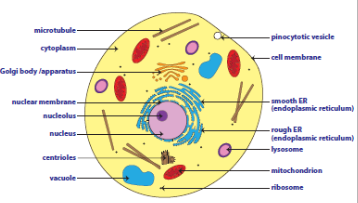- Home/
- CDS & Defence/
- Article
Which of the cell organelle is not present in animal cell?
By BYJU'S Exam Prep
Updated on: September 25th, 2023
(A) Nucleus
(B) Cell wall
(C) Ribosome
(D) Golgi
Cell wall is not present in animal cell. There are some notable distinctions between plant and animal cells despite their essential similarities. Cells in both plants and animals have mitochondria. Animal and plant cells both include vacuoles. Animals have smaller vacuoles compared to plants, which have larger ones.
Table of content
Explain Cell Wall
The cell wall, vacuoles, and chloroplast are the most conspicuous and distinctive features of a plant cell that are absent in animal cells, despite the fact that both cells are classified as eukaryotic cells.
- In plants, the cell membrane is encased by the cell wall. The rectangular shape of the plant cell is a result of this.
- Animal cells lack a cell wall and only have a cell membrane.
- Chloroplasts are found only in plant cells. This is so that plants, unlike animals, may obtain sugar without consuming food. Instead, they use sunshine to generate it.
- All live cells contain ribosomes, a complex macromolecular structure that is where biological protein synthesis takes place. Animals and plants both contain them.

Summary:
Which of the cell organelle is not present in animal cell? (A) Nucleus (B) Cell wall (C) Ribosome (D) Golgi
Animal cells do not contain cell walls. Despite their fundamental similarities, there are some major differences between plant and animal cells. Even having similarity between plants and Animals, there are plenty of difference between them.
